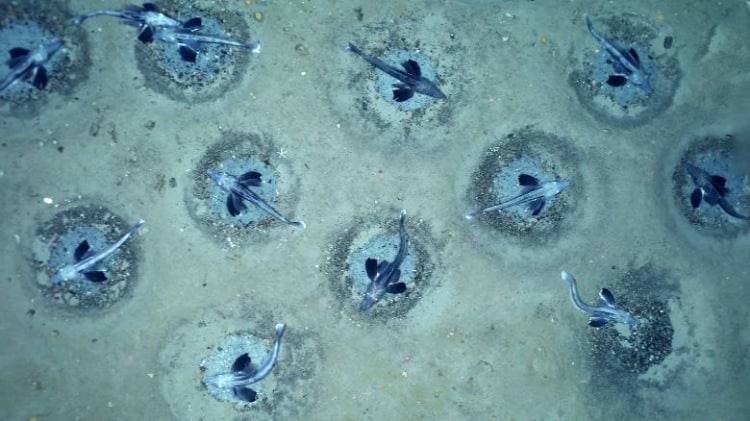A fish colony the size of Malta has been discovered in Antarctica
Sat 15 Jan 2022
A colony of 60 million breeding fish has been discovered in Antarctica’s ice-covered Weddell Sea, which was an unknown ecosystem of the past that covers an area the size of Malta.
This find indicates truly how much the world knows of the depths of the ocean. The vast colony is believed to be the world’s largest and is home to the remarkable icefish, which has a see-through skull as well as transparent blood. The icefish are the only vertebrates that have no red blood cells.
In order to survive at such low temperatures, it has developed an anti-freeze protein in its transparent blood that prevents ice crystals from growing.
In February 2021, the breeding colony was discovered by the German polar research vessel Polarstern, which was exploring the seabed about half a kilometre below the ship. The discovery used a car-sized camera system attached to the stern of the ship that sends pictures up to the patio as it’s being towed.
The exploration was focused on ocean currents and the discovery of the nests, made distinct from the muddy seabed by a circle of stones, was a surprise.
“We just saw fish nest after fish nest for the whole four hours, and during that time we covered maybe six kilometres of the seafloor,” said Autun Purser, a postdoctoral researcher at the Alfred Wegener Institute in Bremerhaven, Germany. He’s the lead author of a study on the icefish colony that was published in the journal Current Biology. I’d never seen anything like it in 15 years of being an ocean scientist. After that dive, we emailed the experts onshore who know about fish like this. They said, yep, this is pretty unique,” Purser said.
Four further camera dives revealed the dramatic extent of the breeding colony — and its striking uniform nature.
“This is indeed a surprising discovery,” said John Postlethwait, a professor of biology at the University of Oregon, who studies the fish. He wasn’t involved in the research.
“It is also significant. The extent of the biomass is to me at least unexpected. And the extent to which the fish change the bottom structure of sediment creates (a) habitat for a community that ripples up the food web to support a huge variety of species,” he added.
The colony covers more than 240 square kilometres, the researchers said.
With, on average, one nest for every three square meters, they estimated that the colony includes about 60 million active nests.
Each of the evenly spaced nests was about 15 centimetres (6 inches) deep and 75 centimetres in diameter, containing on average 1,735 eggs. Most were guarded by one adult fish. Some nests only contained eggs, and some were unused.
“The spacing of the nests is kinda like the spacing of birds on a telephone line. Some animals like to be social, but there’s a limit. Congregating may give them advantages for finding mates but provides a rich point source for predation,” Postlethwait added.
The fish appear to be attracted by an area of warmer water, which is around 2 degrees Celsius warmer than the surrounding sea bed, which is a chilly 0 degrees Celsius, said Purser.
The researchers have deployed two camera systems to monitor the icefish nests until a research vessel returns. The hope is that photographs will catch more details about the fish nest ecosystem.
One question researchers want to answer is how long the adult fish guard the eggs — experts suspect it could be months — and whether it was the male or female standing watch.
“It appears that that the reproductive behaviour of most, if not all, icefishes, revolves around the male courtship of females through building a ‘good’ nest, said icefish expert H. William Detrich, professor emeritus of biochemistry and marine biology at Northeastern University. He wasn’t involved in the research.
The findings reveal a globally unique ecosystem, according to the researchers, and they say it should be designated a protected area.
“The implications for conservation of this species are clear — a marine protected area should be established in the Weddell Sea to prevent exploitation of this icefish species, ” Detrich added.
Source: Agencies

 Apr 28 2024
Apr 28 2024













